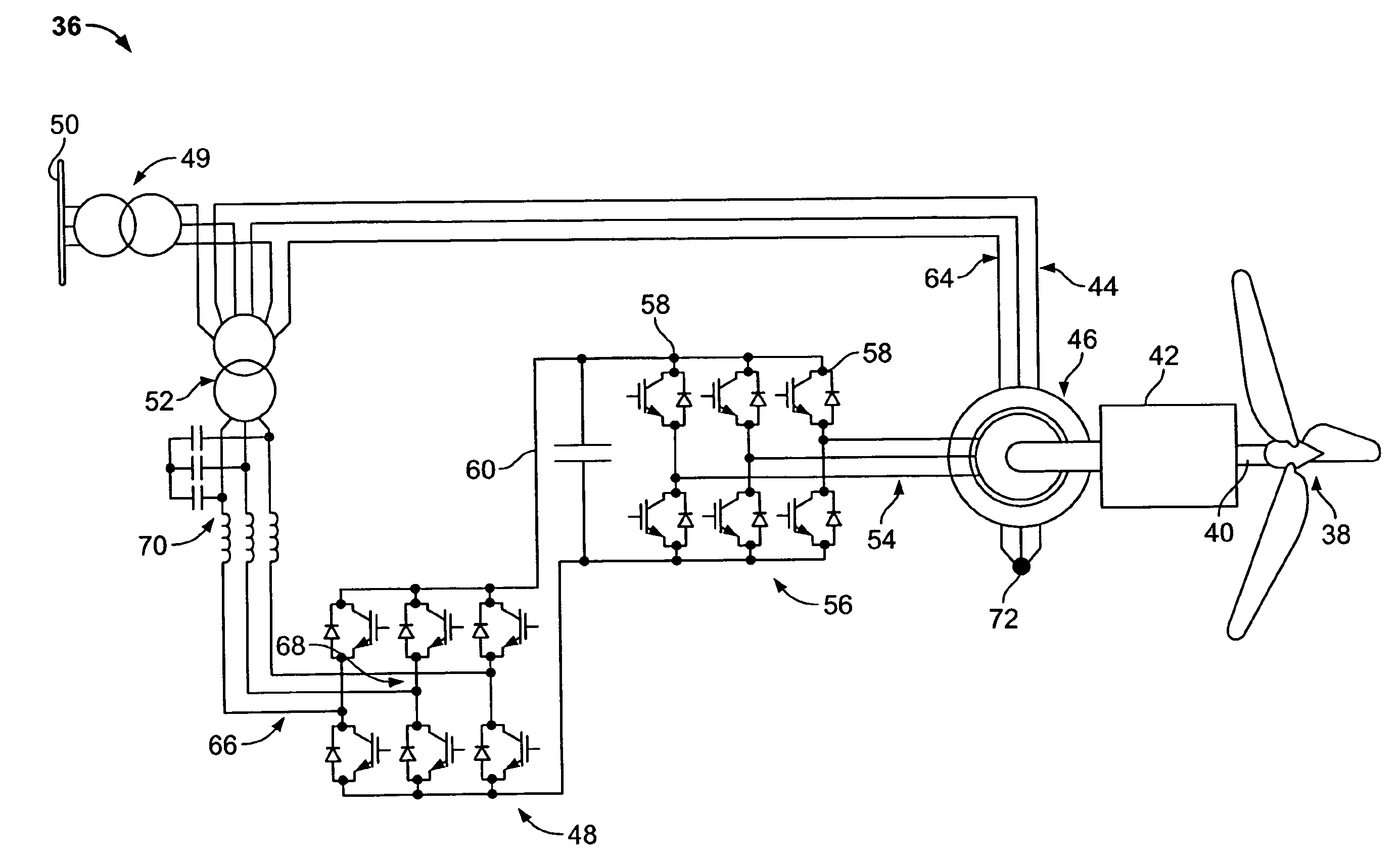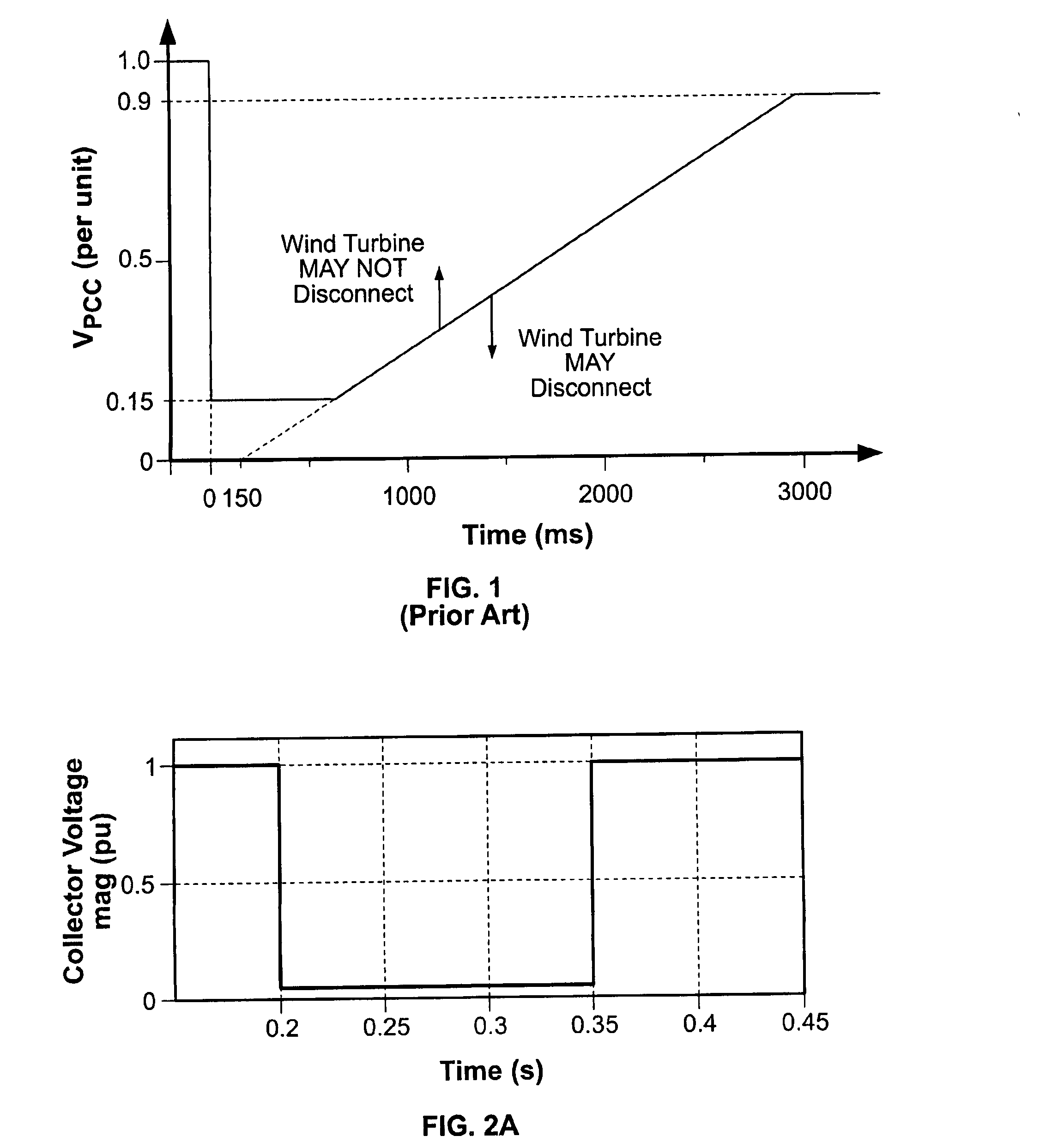Power conditioning architecture for a wind turbine
a technology of power conditioning architecture and wind turbine, which is applied in the direction of electric generator control, machine/engine, dynamo-electric converter control, etc., can solve the problems of premature failure of the wind turbine, substantial oscillation of the rotor phase current, and stringent demands of the transient, so as to reduce the size of the transient current and torque level
- Summary
- Abstract
- Description
- Claims
- Application Information
AI Technical Summary
Benefits of technology
Problems solved by technology
Method used
Image
Examples
Embodiment Construction
[0043]FIG. 4A schematically shows a stator-side architecture for a DFIG-based wind turbine according to one embodiment of the present disclosure. As illustrated, a SGSC (series grid side converter) behaves as a buffer between a collector, e.g., PCC (point of common coupling), and a DFIG (doubly fed induction generator) thereby decoupling interactions between the PCC and the DFIG. As will be explained in greater detail below, the SGSC is effective in reducing stator flux in the DFIG during voltage disturbances, such as voltage sags, in the PCC.
[0044]FIG. 4B illustrates a wind turbine 36, according to one embodiment of the present disclosure that incorporates a buffer such as that described with respect to FIG. 4A. The wind turbine 36 includes a blade arrangement 38 connected to a rotor 40 that is driven in a computer controlled manner by a gearbox 42. The gearbox 42 is connected to a DFIG circuit 44 through a generator 46. The DFIG circuit 44 has a series grid side converter (SGSC) 4...
PUM
 Login to View More
Login to View More Abstract
Description
Claims
Application Information
 Login to View More
Login to View More - R&D
- Intellectual Property
- Life Sciences
- Materials
- Tech Scout
- Unparalleled Data Quality
- Higher Quality Content
- 60% Fewer Hallucinations
Browse by: Latest US Patents, China's latest patents, Technical Efficacy Thesaurus, Application Domain, Technology Topic, Popular Technical Reports.
© 2025 PatSnap. All rights reserved.Legal|Privacy policy|Modern Slavery Act Transparency Statement|Sitemap|About US| Contact US: help@patsnap.com



